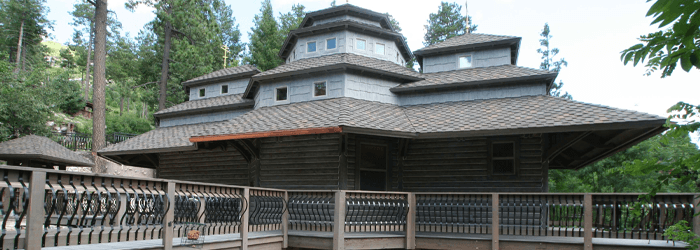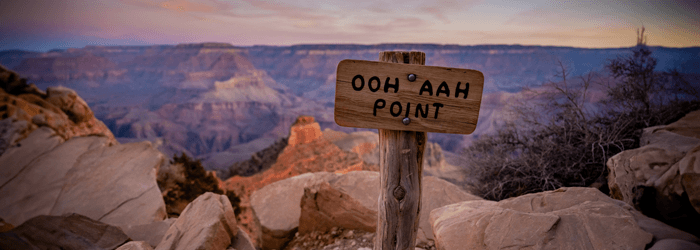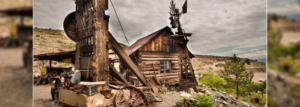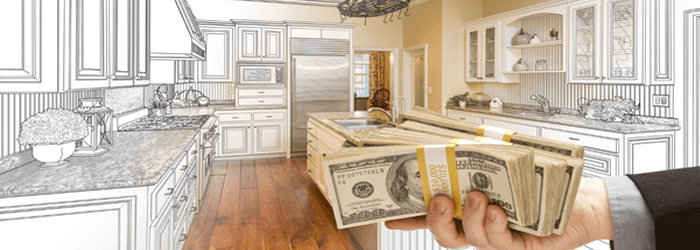This week Rosie on the House staff and many of our listeners and readers are celebrating Easter or Passover. Arizona has a rich history of varying religious denominations. Let’s take a look at some of our oldest and architecturally stunning places of worship.
The Oldest Places of Worship in Arizona
OnlyInYourState ranked the oldest places of worship in Arizona. It should be recognized that the original Tribes worshiped on Arizona lands first.
Mission San José de Tumacácori | Tumacácori — 1691
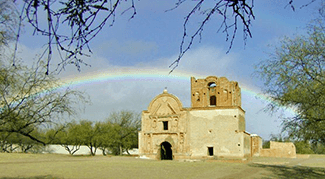
Located near Tubac, this is one of the oldest surviving missions in Arizona. Construction of the church began in 1753 and was eventually abandoned in 1848. It is open to the public as Tumacácori National Historic Park .
Mission San Xavier del Bac | Tucson — 1692
Construction on the “White Dove of the Desert” began in 1783. The mission was originally founded in 1692 by a Jesuit missionary, Father Eusebio Francisco Kino. The present church was built by the Franciscans between 1783-1797.
Mission San Cayetano de Calabazas | Tumacácori — 1756
Serving its community for approximately 20 years before going up in flames it is now part of the Tumacácori National Monument.
Saint Mary’s Basilica | Phoenix — 1880
Located in the heart of downtown Phoenix, construction on Saint Mary’s Basilica began in 1880. Within a couple decades repairs and expansion were needed, so the little adobe church was demolished and construction on the current church began in 1903.
Saint Paul’s Episcopal Church | Tombstone — 1882
St. Paul’s is the oldest Protestant church in Arizona. Constructed of adobe bricks, this small church with many of the original furnishings was added to the National Register in 1971.
First Methodist Episcopal Church | Williams — 1891
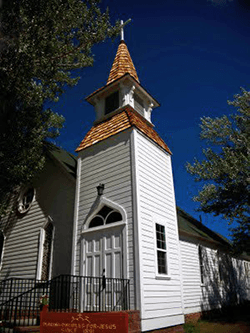
Reminiscent of a Rockwell painting, it is now the Community United Methodist Church.
Sacred Heart Catholic Church and Rectory | Prescott — 1891
Construction began in 1891 and it was completed in 1894. Today it serves as the home for the Prescott Center for the Arts.
Our Lady of Victory Catholic Church | Pearce — 1893
Built of adobe bricks during Pearce’s booming mining days. Its construction dates vary, with some sources stating it was built in 1893 and others claiming it to be as late as 1917. Today, the church sits unused.
First United Methodist Church | Mesa — 1893
This little building was the first permanent church to be constructed in Mesa. Construction on the large church seen today began in 1913 with materials from the original church and sand from the Salt River.
Saint Augustine Cathedral | Tucson — 1896
Architecturally splendid with its high interior, tall windows and dome, the Cathedral’s elaborate cast stone façade is a treasure of sign and symbolism.
Clear Creek Church | Camp Verde — 1898
Constructed of limestone from a nearby quarry, it was the only church in the area and served the Methodist community until 1913, when the congregation moved to another church. It later served as a one-room schoolhouse and a cannery before being abandoned in 1946. Today it is a wedding venue.
All Saints Church | Oracle — 1901
Now known as the Oracle Union Church, it stands out for its rubble construction and large, weathered stones.
Temple Emanu-El | Tucson — 1910
The first synagogue in the Arizona Territory, the Reform Temple Emanu-El, was founded in Barrio Viejo, what is now an historic neighborhood on the southern edge of downtown Tucson. The congregation moved to its current location many years later. Today, the original structure is the Jewish History Museum and Holocaust History Center . This museum is Arizona’s only Holocaust History Center.
Amazing Architecture
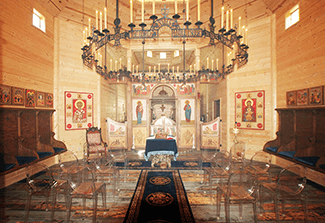
There are amazing feats of spiritual architecture throughout Arizona. The newest church to join the collection is Mary Undoer of Knots Shrine located on Mt. Lemmon’s Summerhaven Village in Tucson’s Catalina Mountains.
“After researching the construction and Eastern Rites of the church, I felt we should simulate as much as possible the building style but using modern techniques to build it,” says the project’s architect, Chauncey Meyer, AIA, J. Chauncey Meyer Architecture.
Inspired by Ukranian Boyko and Lemko designs of Byzantine Catholic chapels, these churches are defined by a three-section design with very tall gabled roofs and a tower over each section, with the tower over the entrance being the tallest. Topping each tower is a Gothic spire, and the central nave being the largest and intricate part of the church is multi-tiered with shingled roofwork. Having both frameless walls and rafterless roofs, each piece of wood is held together by custom cut beams, joists and rafters.
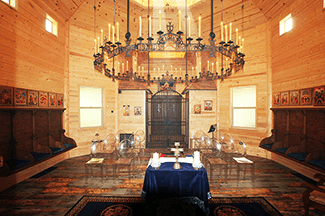
This chapel is a marvel of the gift of craftsmanship. You need to know carpentry to fully understand and appreciate how complicated the construction of this project was.
Typically, Boyko does not use nails in the construction in respect to Christ’s crucifixion on the cross. However, to meet current local codes and standards, nails were used in the construction of this project.
Compressive and tension rings allowed craftsmen to stack the wall forms as they went up. The octagon dome is made of steel plates. “We emulated those techniques that represent Boyko Design and the symbolism of the practices of Easter Catholic traditions,” says Meyer.
Douglas Fir sourced from the Pacific Northwest and New Mexico are the primary materials used to construct the project. The smooth side of the pine board is used in the interior lower portion of the chapel. The durable porcelain tile flooring is made to look like rustic wood. Pella Windows provide views of the mountain.
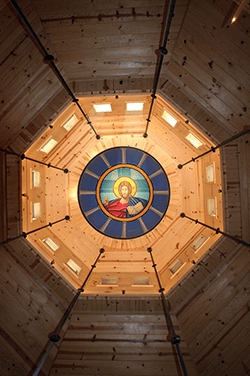
As for energy efficiency, “it far exceeds any of the codes,” boasts Meyer, “The building was so airtight that a mechanical contractor had to make adjustments for fresh air flow.”
In addition to the heavy timber, Class A roof shingles construct the roofing system. This is particularly important because the chapel is located in the high pines, where wildfires can occur. These fiberglass shingles do not promote ignition if embers land on the structure. The property is also kept clear of brush.
The shrine has an original, authentic, working Paul Revere Bell. Cast according to church secretary records in 1826 by Paul Revere’s partner and son, Joseph Warren Revere.
The Ramada seats over 100 people and contains a Meditation Labyrinth. Red and white clay bricks are currently being engraved for families wishing to honor their loved ones who served in the military or chaplain corp. Black granite bricks are historical in nature honoring future saints, heroes, and people closely affiliated with the founding and construction of the shrine.
Honorable Mentions
In addition to the churches and synagogues mentioned above, from an architecture standpoint these stunning places of worship are also worth a visit.
Chapel of the Holy Cross | Sedona
Designed by a student of Frank Lloyd Wright and nestled into Sedona’s red rock foundation, the American Institute of Architects gave the Chapel its Award of Honor in 1957. In the sculptor’s words, “Though Catholic in faith, as a work of art the Chapel has a universal appeal. Its doors will ever be open to one and all, regardless of creed, that God may come to life in the souls of all men and be a living reality.” In 2007 Arizonans voted the Chapel to be one of the Seven Man-Made Wonders of Arizona.
Havasupai Bible Church | Supai, Grand Canyon
This chapel nearly blends into the landscape.
Brophy College Chapel | Phoenix
Built in 1928 in a classic Mission style, the chapel is a registered national historic site and even has a 15th century Italian painting hanging on the walls.
Mesa Arizona Temple | Mesa

Although not technically a church where worship services are held, the Mormon temple is composed of concrete and terracotta. The site is well-known for hosting annual Easter and Christmas events. Basking in the glow and beauty of the Christmas lights are well worth the trip.
First Christian Church | Phoenix
Meant to evoke the Holy Trinity and reflect an attitude of prayer, the chapel’s roof and spire rise seventy-seven feet, supported by the 23 slender triangular pillars. Light filters through the spire’s stained glass insets onto the floor of the 1,000-seat diamond-shaped sanctuary.
McKee Amphitheater & Shrine of the Ages | Grand Canyon
This multi-purpose building used by the National Park Service used to conduct religious services and may be rented for private functions, including wedding ceremonies, by obtaining a park Special Use Permit.
No matter where you worship, from all of us at Rosie on the House, we wish you a Blessed Easter and Happy Passover.
###
PODCAST
For Easter’s renewal of spring, we look at some of the stunning architectural places of worship. Featuring Chauncy Meyer discussing his work in the incredible Mary Undoer Of Knots Church on Mount Lemmon in Tucson. Plus some of the other historical churches in Arizona. And homeowner questions about a new home builder’s warranty and moisture under the shower tile.
Photo Credits:
- National Park Service Photo by Ed Wittenberg
- J. Chauncey Meyer Architecture
- Mesa Arizona Temple/Bonilla Design & Advertising
- First Methodist Episcopal Church, Williams

